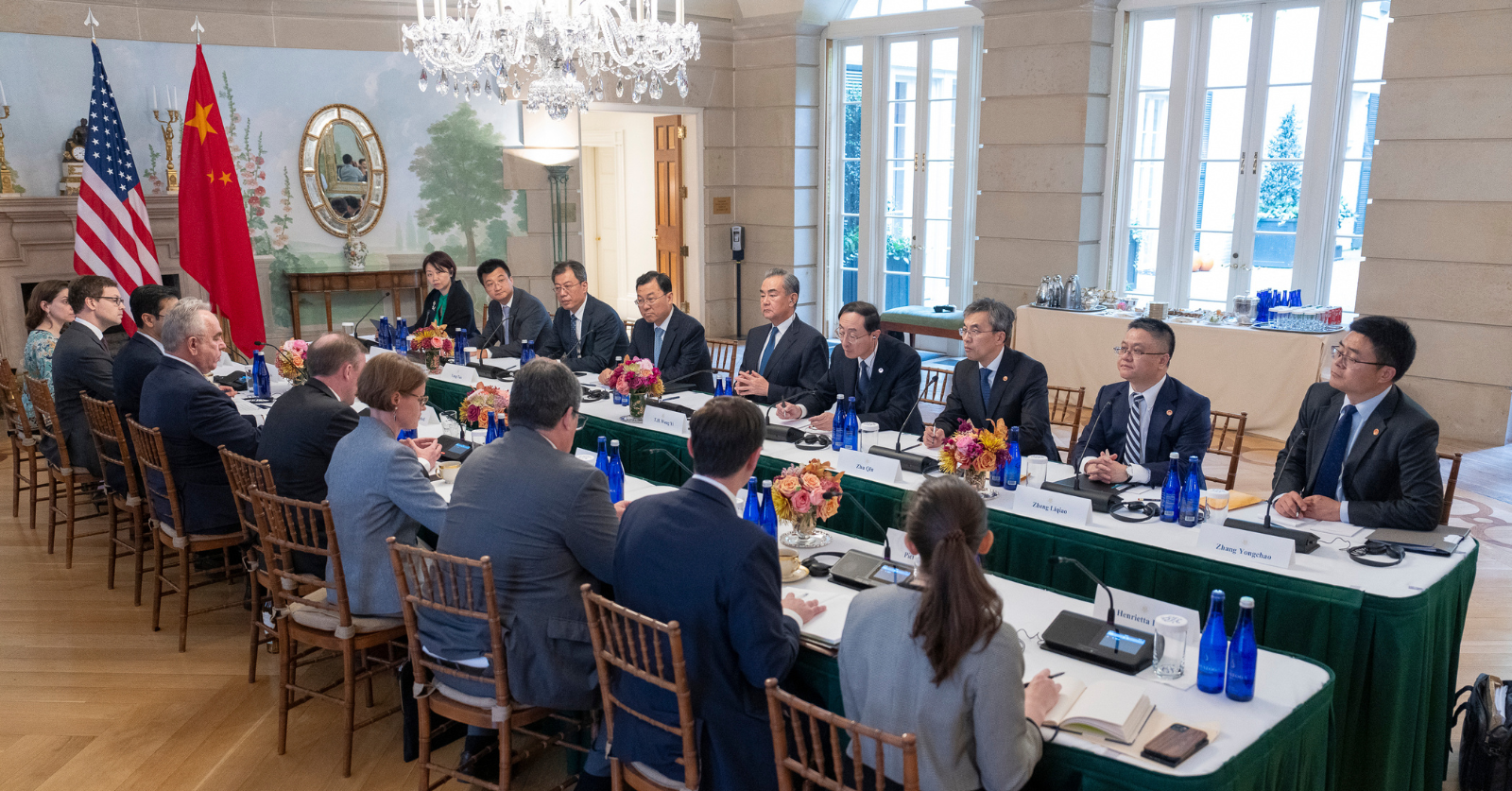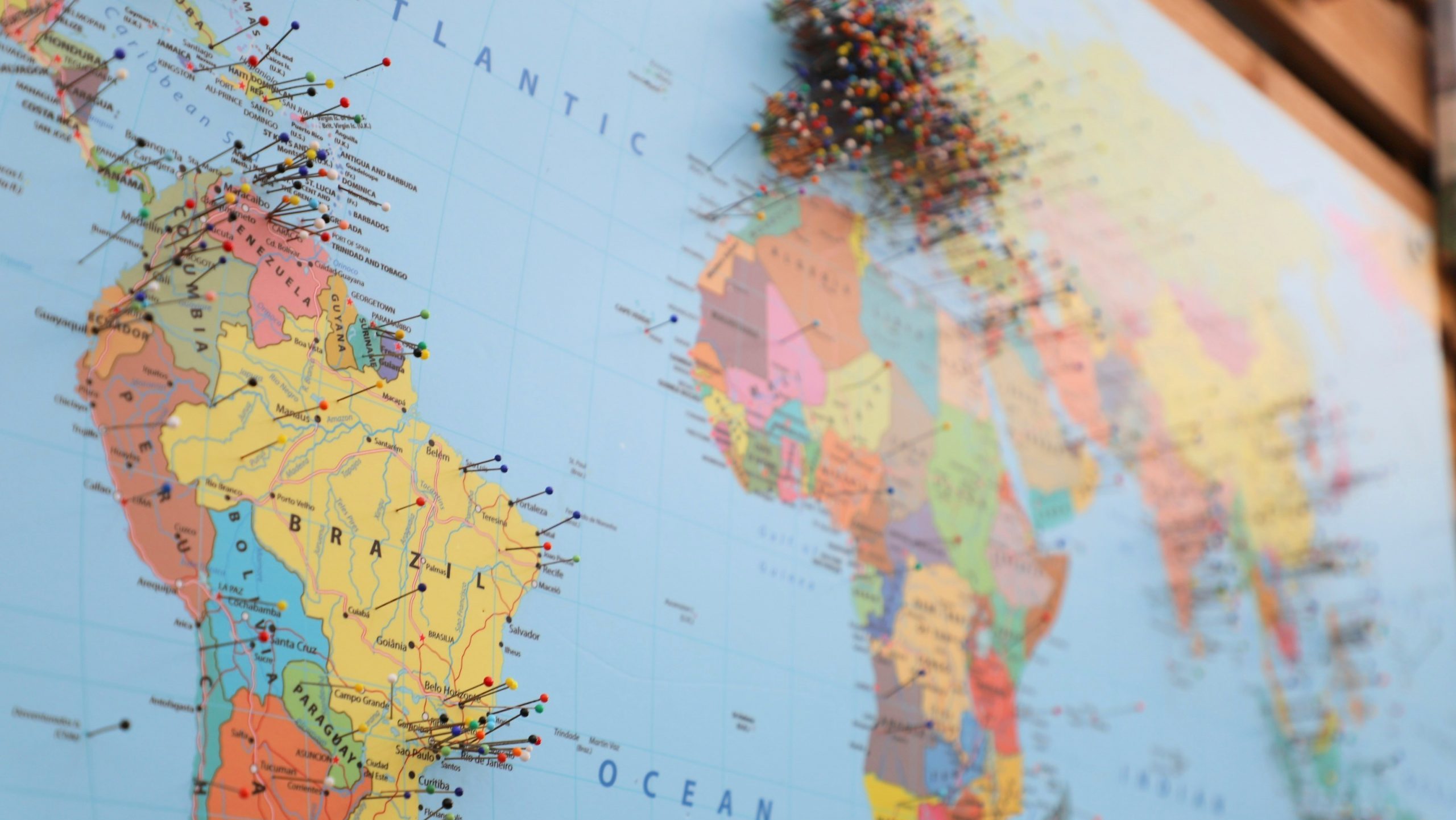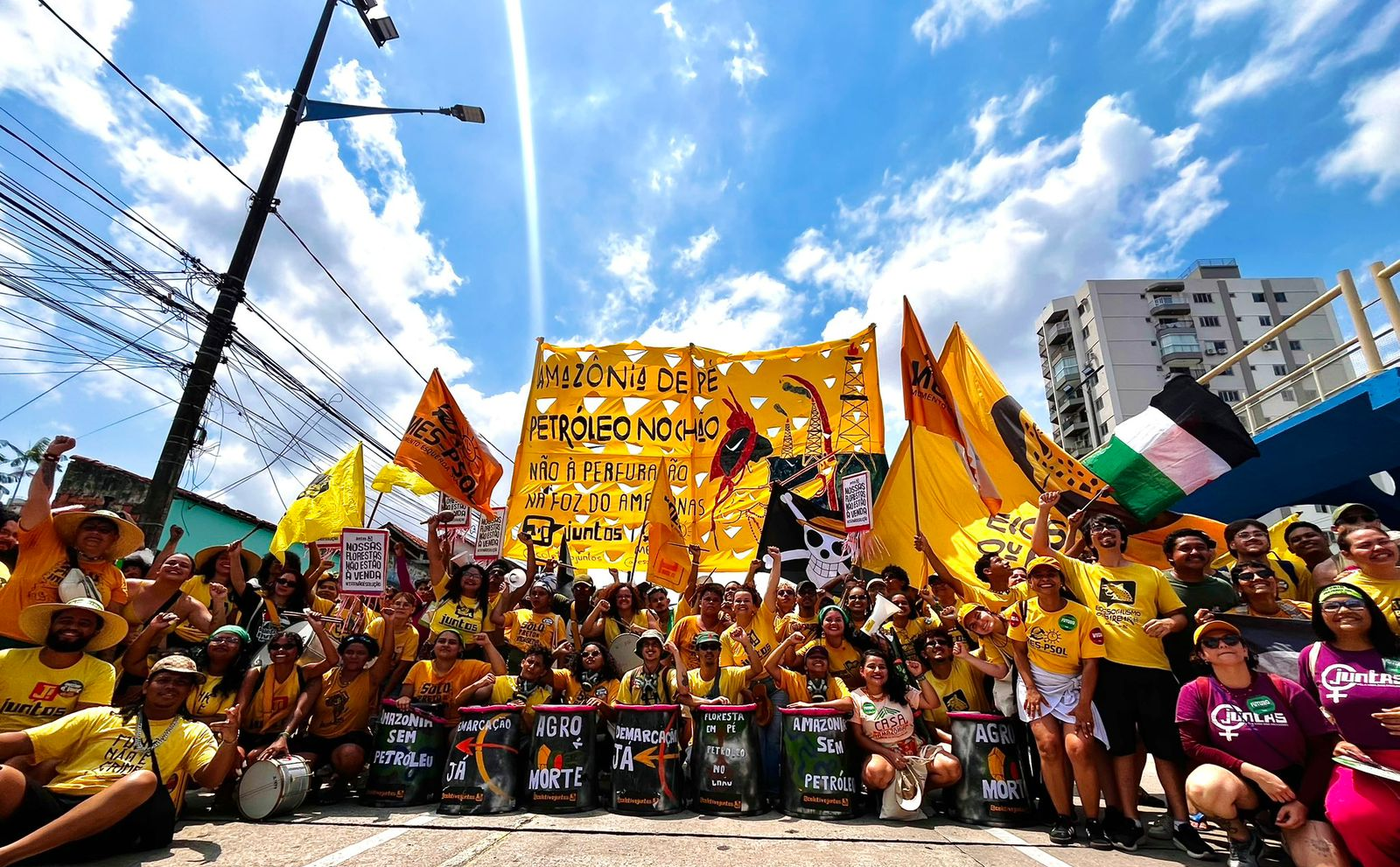The following text is republished. It was originally published by comrades in the organization Democracia Socialista from Puerto Rico in their magazine momento crítico.
1. After the fall of the Berlin Wall and the collapse of the Soviet bloc, among the new myths of the ideology of late capitalism — as part of the “end of history” and the new vigor of the “free market” — arose the concept of the “unipolar world.” In summary, it was proposed that the end of the Cold War marked the end of the two rival “camps” — the capitalist camp (represented mainly by the United States) and the socialist camp (which included the Union of Soviet Socialist Republics, China, Vietnam, Cuba, North Korea, etc.) — and we would then move on to a world with a single “field,” or a single pole, a “unipolar” world, in which capitalism was triumphant throughout the world. But in reality, “capital” was rarely spoken of as the dominant force. Instead, a national face was given to this dominance: the United States of America. In that sense, and despite the multiple meanings of the term, when talking about the unipolar world after the fall of the Soviet bloc, reference is mostly made to a world dominated by American hegemony.*
2. This notion of American hegemony, however, must be qualified. While it is true that the main power at the end of the 20th century was the United States, it is also true that it was a power that was already showing a tendency towards decline. Since the recession of 1973-1974, the weakening of its influence in the world market became increasingly obvious, and it suffered humiliating military defeats, mainly in the Vietnam War but also in its repeated failed attempts to reverse the Cuban Revolution. With the recession of 1973-1974, a long wave of decelerated development began in world capitalism, an extended period in which global capitalism experiences, within its recurrent fluctuations, weak growth. And, in fact, one of the characteristics of the long waves of decelerated development of capitalism historically has been the weakening of the hegemonic power.
3. Within a few years, a new recession (1981-1982) demonstrated the continued fragility of the capitalist economic system. The subsequent collapse of the Soviet bloc allowed a great respite for global capitalism because capital expanded into geographic areas previously dominated by the bureaucratized economic planning of the USSR, and thus increased its profits rapidly and momentarily. The collapse of the Soviet bloc, moreover, meant that capitalism had triumphed in the world market. It was true, then, that the capitalist system of production was crowned champion by the end of the 20th century. It was also true that the main power was still the United States. What is wrong is to confuse these two statements and assume that the United States remained a world hegemonic power. What became hegemonic was not the United States, but capital.
4. Even before the Great Recession of 2008, US hegemony was being undermined by the development of new global players, primarily China, in its ongoing process of capitalist restoration and imperialist expansion across the globe. There were also global integration projects, such as BRICS (Brazil, Russia, India, China, South Africa) or the Bolivarian Alliance and CELAC (the Community of Latin American and Caribbean States), which experienced advances in the way goods were exchanged globally and even raised the possibility of the creation of new global banks to challenge the dollar and the US financial system.
5. But the capitalist system of production itself generates contradictions that it cannot overcome, which implies periodic economic and political crises. In turn, the recurrence of crises breaks any hegemony that seems to be absolute or unquestionable. The elements underlying the 1973-1974 crisis, although they could be restrained, could not be stopped, and with the Great Recession of 2008 the deep weaknesses of the current economic system came to light again.
6. We now find ourselves in a situation in which many people and forces critical of American capitalism recognize the existence of a “multipolar” world. When they speak of a multipolar world, they refer to a historical moment that is moving away from the previous unipolar world, in which new economic powers (“new geopolitical actors”) challenge the dominance of the United States at the global level. China, a rising power since the end of the 20th century, is also joined by Russia, and projects of international collaboration such as the BRICS are once again being discussed and renewed.
7. Given this new situation, how should the revolutionary left respond? To answer this question, it is convenient to briefly explain what happened prior to American hegemony in the history of capitalism.
8. The long wave of decelerated development at the beginning of the 20th century saw the weakening of what was once the great capitalist power, the United Kingdom. In the process of weakening, in the era that Marxist theory classifies as the era (or phase) of imperialism, the rising capitalist powers that challenged the United Kingdom sought to increase their dominance. In the process, the First and Second World Wars occurred, two wars resulting from the expanding interests of monopoly capital. The multiple imperialisms, therefore, led to world wars. The proposition that competition between the different sectors of monopoly capital leads to war was a central idea of the entire analysis of revolutionary Marxism (Lenin, Luxembourg, Trotsky) in that period in the history of capitalism. Revolutionary Marxism refused to take sides with any imperialist power, but rather rejected imperialism in its entirety and in its many forms.
9. It was not until the end of World War II that the United States became the hegemonic world power, and it did so in a period of transformation for the global economy. This was a period in the history of capitalism of unprecedented economic growth. After World War II, a long wave of accelerated development began, characterized by the hegemony of the United States at the level of the capitalist world market, and this lasted a little more than three decades. The recession of 1973-1974 represented the change from this long wave of accelerated development to a long wave of decelerated development.
10. Let us compare, then, these two long waves of decelerated development. In the first wave of deceleration, we have the United Kingdom weakening as a capitalist power, the rise of new imperialist powers (mainly in Europe, but also Japan), and world wars between the imperialist powers as mechanisms for exercising their dominance. Around these powers, other countries line up. In the current wave of deceleration, we have the United States weakening as a capitalist power, the rise of new imperialist powers (China, Russia), and the beginning of threats of world wars between the imperialist powers as mechanisms for exercising their dominance. Around these powers, other countries line up. In all this panorama, in all this competition between imperialist countries, regardless of who wins, there is always one and the same winner: capital.
11. As we have indicated, many forces critical of American capitalism — perhaps even the majority in Puerto Rico [where the authors of this text are based] — refer to the positive aspect of the supposed multipolar world. This new world, they tell us, has multiple powers, mainly the United States, China, and Russia. We no longer have a single hegemonic vision, but rather a pluralistic world. In the face of the atrocities committed by the United States, it is also positive that this power is losing its strength.
12. However, there are multiple errors in these statements. First, the weakening of the United States is a reality of the current crisis of capitalism and its wave of decelerated development. The strengthening of new imperialist or potentially imperialist forces is also a reality. But these changes have little to do with the success or failure of other capitalist economic powers. Second, none of these countries challenges the capitalist system of production. Rather, what they do is reintroduce competition between imperialist countries, as was seen at the beginning of the 20th century. And competition between imperialist countries only paves the way for world wars. The current conflict in Ukraine is the most recent example. And the atrocities that these new powers have committed and are committing cannot be ignored. To see Russia and China (or their allies like Nicaragua) as anti-imperialist forces because they “challenge” the power of the US is to lose sight of the fact that they only want to take the clothes off one saint to dress another — or, rather, to dress themselves as new imperialist powers.
13. Part of the argument is that the unipolar world consisted of the hegemony of the United States after the fall of the Soviet bloc. However, we believe it is more precise to recognize that there was no such hegemony, but rather an imperialist power, still dominant, but in an acute process of weakening. We are not moving, then, from a unipolar world to a multipolar one, but we are simply seeing the ongoing deterioration of an imperialist power, a deterioration that began in the 1970s.
14. On the other hand, if we were to refer to the unipolar world, not as one dominated by the United States, but by capital, the current reality would be the following: the competition between these different imperialist countries does not represent a struggle between poles with antagonistic visions [for the economy], but rather inter-imperialist and capitalist conflicts, whose rivalry continues to intensify in a global context of stagnant and declining profit rates.
15. The division of the world into “poles” or “fields” has the great drawback of segmenting it based on the balance of global forces only expressed politically by different nation states. The various social actors in each country are left out of this map, both the revolutionary movements in imperialist countries — with which the revolutionary left should ally and support — and the resistance to bureaucratization and capitalist restoration that can occur in “socialist” countries and in the popular struggles that occur against governments associated with the new imperialist powers. The easy definition of nations organized into rival poles or fields — although it can be useful for its schematization of the global [geopolitical] level — also moves away from the Marxist analysis focused on social relations and productive forces. The relationship between the peoples in struggle is replaced by relationships with representatives of those nation states.**
16. With regard to the great capitalist powers, the revolutionary left should neither yearn for competition between imperialist countries nor wish for a hegemonic capitalist country to exist, but should fight against the domination of capital. The political and economic situation must define the specificities of each moment, but the rejection of imperialism in all its manifestations is a position of principle. And the rejection (not only rhetorical) of imperialism should also entail support for popular struggles in the different corners of the earth, and an uncompromising defense of democratic rights and freedoms.
17. With respect to the “peripheral” countries that align themselves with any of these forces (the United States, mainly, on one side, Russia and China on the other), the position does not change. The reactionary dictatorship of Daniel Ortega in Nicaragua does not represent a threat to capitalism, nor should we support it for its “anti-imperialist” rhetoric. Quite the opposite: to the extent that Ortega represents himself as a force on the left, he does nothing but harm the struggle at the international level, while violating the most basic democratic rights in his country.
18. Therefore, the left that supports this new “multipolar world,” and even sympathizes with the new imperialist powers (China, Russia) or their allies, is doing nothing more than repeating the mistakes of the right-wing of social democracy in the era of world wars and imperialism of the first half of the 20th century. These leftists distort the revolutionary principles of Marxism in such a way that it distances them from the struggle for socialism and opens the way to war and destruction.
Notes
(*) We use the term “hegemony” with its usual meaning, “supremacy that one state exercises over others.” We do not use the term “hegemony” in the Gramscian sense, although it might also apply in some instances of our piece.
(**) In the field of international relations studies, there are exceptions, from the left, to this vision of global “fields” or “poles.” Some examples are: Robert W. Cox, Social Forces, States, and World Orders: Beyond International Relations Theory; Benno Teschke, The Myth of 1648; Justin Rosenberg, International Relations in the Prison of Political Science and Debating Uneven and Combined Development/Debating International Relations: A Forum.
Translated and republished from Momento Crítico.




